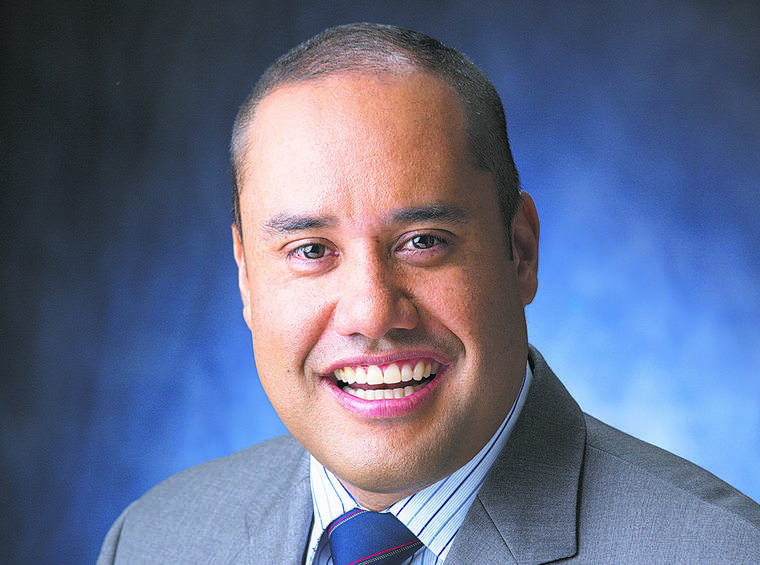$10M in federal relief money to go to nontourism jobs
HONOLULU — In what has become an opportunity to diversify Hawaii’s economy, the state is setting aside millions of dollars in federal COVID-19 relief money for nontourism jobs.
HONOLULU — In what has become an opportunity to diversify Hawaii’s economy, the state is setting aside millions of dollars in federal COVID-19 relief money for nontourism jobs.
Gov. David Ige and state lawmakers are still figuring out how to distribute the $1.25 billion in relief funds allocated to Hawaii through the federal Coronavirus Aid, Relief, and Economic Security (CARES) Act, but for the moment at least $10 million will be used for jobs in industries such as agriculture, health care and technology.
A section within Senate Bill 126, which breaks down how the relief money will be spent,allocates $10 million for “retraining and workforce development programs” to help Hawaii transition from its tourism-heavy economy.
“What we tried to do was to get people off unemployment and start to seed nontourism-sector jobs,” said Sen. Donovan Dela Cruz (D-Oahu). “Employers, some nonprofits, some government agencies that have hard-to-fill positions because people don’t have experience — those monies will pay roughly $13 an hour for employees to work.”
Dela Cruz described the positions as on-the-job training that can be funded until the end of the year, when CARES Act money for governments has to be spent.
Tourism is “the largest single source of private capital for Hawaii’s economy,” according to the Hawaii Tourism Authority, which reported that visitor spent nearly $17.6 billion in Hawaii in 2018.
Sumner La Croix, a University of Hawaii Economic Research Organization research fellow and professor emeritus of economics, said direct and indirect tourism spending accounts for about 25 % of Hawaii’s economy.
That stream of money has been lost since the COVID-19 outbreak resulted in a mandatory 14-day quarantine for passengers arriving in Hawaii from out-of-state that Ige ordered in March and extended through at least September.
UHERO reported on Aug. 14 that nearly 20% of businesses had “essentially no revenue ” since January and another 20% reported that their monthly revenue was cut by at least half.
Dela Cruz and others believe it’s the right time to begin diversifying Hawaii’s economy.
“We’ve been on the gravy train of tourism for so long that people just don’t know how to adjust anymore,” Dela Cruz said. “And I know that a lot of people are hoping … we’ll just wake upone day and it’ll be back to normal, but that’s not the case. And that shouldn’t be what Hawaii wants anyway.”
Even when Hawaii welcomes back tourists, it may be some time before they visit in the numbers they did prior to the pandemic. Another UHERO study, from May 28, when Hawaii appeared to have the virus under control, forecast that visitor numbers will stay below 2019’s record-breaking numbers for the next five years.
When SB 126 was sent to the governor for approval with $36 million in CARES Act money allocated to job retraining programs, Ige’s line-item vetoes on July 30 reduced funding to $10 million.
The $36 million would have supported 10 000 jobs through the end of the year, according to Rep. Sylvia Luke (D-Oahu).
“We wanted to provide a lot of jobs, because clearly right now a lack of jobs is a major problem,” Luke said. “The more you scale down, because of the administrative costs and figuring this out, you would actually be limiting employment to … a couple thousand.”
A news release from Ige said the Department of Business, Economic Development and Tourism determined $10 million “is sufficient to launch workforce retraining programs for individuals impacted by COVID-19,” but “additional funding will be provided as needed.”
Ige said he is also waiting for Congress to work out a federal stimulus package that will provide more clarity on how to allocate the federal money.
Luke said the line-item vetoes could have been cost-saving efforts.
“This part is kind of a disappointment because one of the things the executive branch should do is look for creative ways to re-energize and re-invigorate economic activity,” she said. “And just because they want to do cost-savings, that shouldn’t be the driving force right now.”
Luke said the Legislature is still discussing if it wants to challenge the governor’s vetoes.
La Croix agreed that while tourism is on pause, it’s important to move toward diversifying the economy. He said tourism, at least for the foreseeable future, will continue to be the major industry in Hawaii but its expansion before COVID-19 was “congesting” resources, noting problems such as increased traffic and tourists moving into neighborhood vacation rentals.
“I don’t think that kind of low-end tourism is going to be useful for the islands. It’s going to essentially congest our resources,” he said. “I think we need to look carefully at how we really want tourism to proceed.”
La Croix is an advocate for “smarter tourism” that includes bringing fewer tourists who spend more money while on vacation.
Diversification, La Croix said, in part means making Hawaii a more livable place. To do that, some “basics” need to be improved. He placed emphasis on addressing three areas: the cost of housing, the quality of public school education and traffic, which could more broadly represent infrastructure.
Shoring up those areas could make Hawaii a more attractive place for people to move and start and maintain businesses, including those that could provide nontourism jobs.
For now, keeping Hawaii afloat means reopening tourism and allowing tourism-dependent businesses to resume operations.
“There’s definitely potential there to redirect resources as well as retrain some of the workforce for these emerging industries,” said Sherry Menor-McNamara, president and CEO of the Chamber of Commerce Hawaii. “But we can’t just ignore tourism and pivot to focusing on other industries … because that’s where our economy is right now.”





